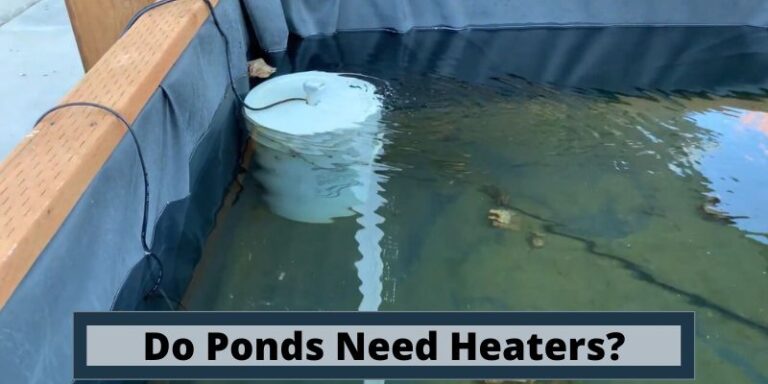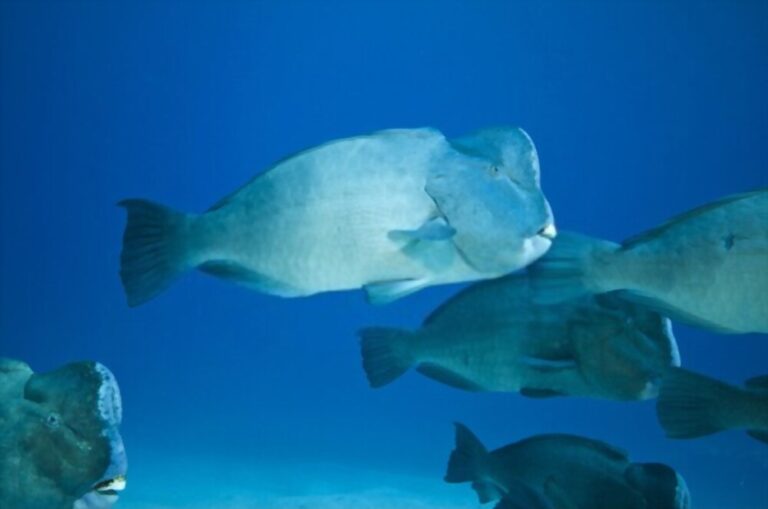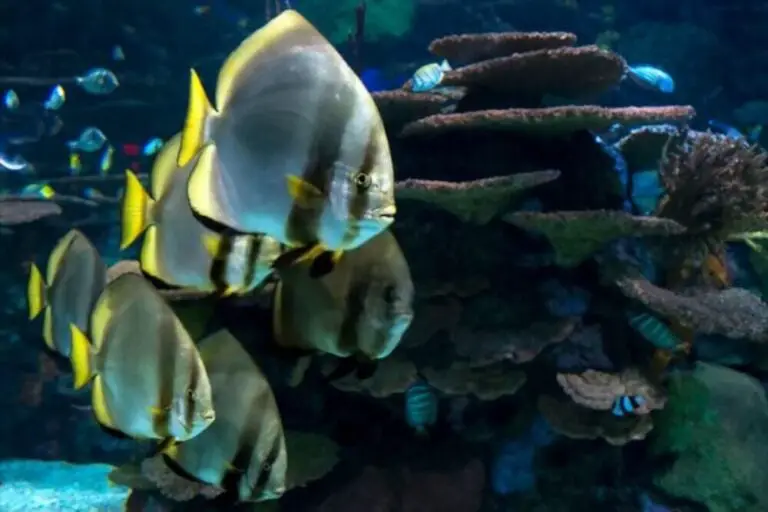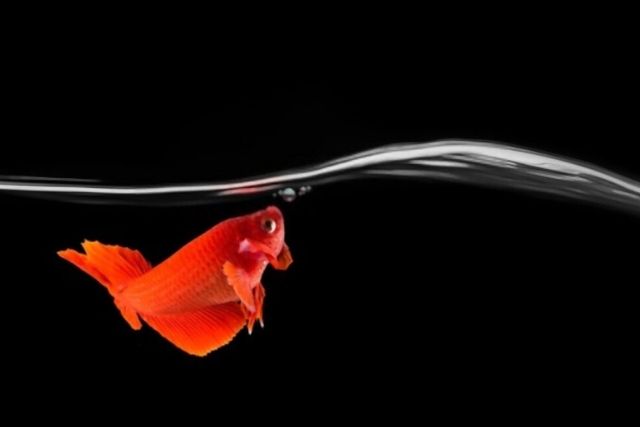How Do Fish Breathe? Know Fish Breathing System Underwater
Like Humans, every creation needs oxygen to breathe and live. Fishes can not live outside water as they need oxygen present in the water, and fishes have a mechanism for breathing.
We have lungs to purify the oxygen from the air we inhale. Fishes have gills used to get oxygen from within the water. Here is the complete information to know how do fish breathe.
What do fish breathe in and out?
Fishes live all their life underwater, but they do need oxygen to breathe for life. They do not need air for breathing, and they get oxygen from water.
To get enough oxygen into their body, they need a large volume of water to pass the absorption surfaces using their mouths and gills. All these body parts of the fish work as a pump to keep the water moving over the gill’s surfaces for absorption.
The breathing system is the respiratory system, and it enables the exchange of gas between the water and fish. This process is very necessary for many vital functions performed by fishes. Like us (humans), all fishes breathe in oxygen and breathe out carbon dioxide.
But this breathing in and out is done only from oxygen that is present in water.
Fish intake water through the mouth and this water are then released from the body by gills. The oxygen present in water is absorbed, and then carbon dioxide is released in water, which passes through the gills out of the body.
Can Fish Drown (Why & How To Identify)? Causes & How Do Fish Drown
Fish breathing system
Fishes have four pairs of gills, while sharks have gills up to seven. A constant supply of oxygen is required for living. Water passes from the thin walls of gills by entering the mouth of fishes.
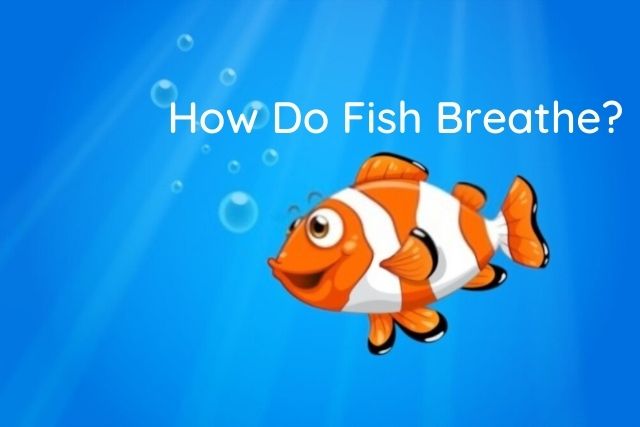
The oxygen that is dissolved from water then moves in blood and travels throughout fish cells. Fish breathing system has some functions like osmoregulation, excretion of nitrogenous waste, ammonium, and detoxification.
There is a total of five-gill arches that are separated by five-gill slits. When fishes breathe in oxygen from water, it moves in throughout their body.
This oxygen then defuses in those areas that have carbon dioxide in huge amounts. And then, the carbon dioxide is removed from the body through gills.
A process known as countercurrent is used for gas exchange in fishes. In the countercurrent process, blood flows through capillaries in the opposite direction to the water flow.
Blood with carbon dioxide (CO2) in high amounts and oxygen (O2) in fewer amounts loses carbon dioxide from the water and captures oxygen.
How do fish lungs work?
For breathing, fish use gills to take in oxygen and take out carbon dioxide instead of lungs. Gills are located on the side of fish heads, having many small blood vessels called capillaries.
Capillaries absorb oxygen dissolved in water that runs over the gills when the fish mouth opens. After that, oxygen is delivered to the fish body by movement of blood inside the body.
The carbon dioxide is passed into the water, which helps the fish to breathe underwater. Gills protect themselves by the opening and closing of the operculum. A bony plate in all bony fish as lungs are present in humans and mammals for breathing to survive.
It also gives the body power by chemical reactions of taking in oxygen and taking out carbon dioxide. Fish use gills to take in oxygen and take out carbon dioxide instead of lungs except for whales and dolphins.
They hold their breath in water and come out from the water to breathe in the air because they are mammals. Gills are located on the side of fish heads, having many small blood vessels called capillaries.
Capillaries absorb oxygen dissolved in water that runs over the gills when the fish mouth opens. Absorbing the oxygen is more comfortable when there will be more surface area on the gills.
How do fish breathe oxygen underwater?
Fishes breathe oxygen through gills. All marine lives, including fishes, need a constant supply of oxygen to live there. They take water in from their mouth and force it to pass out through the gill passages. The walls of gills absorb water as it passes through the thin walls.
The oxygen that is dissolved moves in blood and then travels into the cells of fishes. Oxygen is attracted to hemoglobin which distributes oxygen throughout the body. And carbon dioxide is passed into the water, which helps the fish to breathe underwater.
How do gills work?
Gills are feathery organs and are full of blood vessels. These gills allow fishes to breathe underwater. They are present on both sides of the fish’s throat, known as the pharynx, covered with an operculum, the gill covers.
These gills are some organs that are present on the sides of the head of the fish. Gills provide a vast surface for gas exchange, either it is carbon dioxide or oxygen.
The gill filaments that made gills are arranged so that each of them has lamellae. Lamellae are the disks containing capillaries, and capillaries have blood vessels.
The blood that enters from the gills and leaves from their use these small blood vessels as a passage. Water helps the gills in getting wet all the time.
In bony fishes, there is a flap that covers the gills and protects them from getting harmed. And this flap is known as the operculum. Water enters the fish’s mouth, then moves its operculum and jaws to pump the water through the gills.
This water contains oxygen which is used for respiration. When this water containing oxygen passes from the gill filaments, the blood that is inside the capillaries picks the dissolved oxygen.
The blood present in the capillaries always flows in the opposite direction to the water flow. All this process happens around the gill filaments. Because of this opposite flow, there is an excellent opportunity for absorption.
The circulatory system present in the fish’s body then transports all the oxygen to all body tissues. Besides oxygen transportation, it also picks up carbon dioxide.
This carbon dioxide is then removed from the body with the help, or you can say through the gills. As soon as the water flows through the gills, it moves out (exits) from the fish’s body behind the fish’s operculum.
How do fish breathe underwater?
Humans use lungs for breathing in the air, but fishes do not have lungs, so they use gills for breathing underwater.
So, due to these gills, they cannot intake oxygen from the air. These gills work as a filter that removes oxygen from water and separates and then releases carbon dioxide.
Some fishes like whales and dolphins hold their breath like humans. But some fishes like tuna and salmon can breathe underwater. These gills work similarly to our lungs, filter oxygen, and separate carbon dioxide. All types of fishes use gills for breathing underwater.
The gills can only be able to function underwater. If fishes move from water to land, they will die within seconds due to water shortage.
How do fish breathe under the ice?
Fish and other aquatic animals manage to survive in the winter months too, even the water of rivers and lakes converts to frosted ice. But the only top layer of water freezes and the actual water does not freeze but remains liquid beneath that layer.
The oxygen is absorbed by water before the surface freezes, which helps fish and other aquatic animals to survive in frozen lakes, oceans, and rivers.
There is a significant amount of marine life in oceans, rivers, and lakes that make it possible for these animals to adapt to the changes according to the situation. Fish are cold-blooded animals, so their body temperature will be the same as the environment.
That is why they can adapt to the situation according to changes in the environment. By decreasing the temperature, fish’s metabolism will slow down, so they will swim less. And due to less activity, their body will require less food, and respiration will be slow.
Can fish get out of breath?
In the water, fish never get out of breath, sometimes there is a shortage of breath, but they do not die because of this. But outside, they die because of no oxygen. When these fishes move out of the water, their gills collapse and stop working.
Oxygen needed to breathe is then not available to them, which is important for them to live. Due to the shortage of oxygen supply, they die outside the water.
Fish can also get out of breath, even staying in the water if the oxygen level and the water’s freshness are not sufficient. To keep the water ideal for the fish, you can use two gadgets, first a water freshness tester through which you can measure how fresh the water is.
Second, an air pump will pump fresh air into the water, infusing oxygen for the fish.
Final Words
All the information given above will help you understand how fish breathe and how gills work in the water. They have a natural mechanism for the breathing system, and gills play an important role in breathing.
